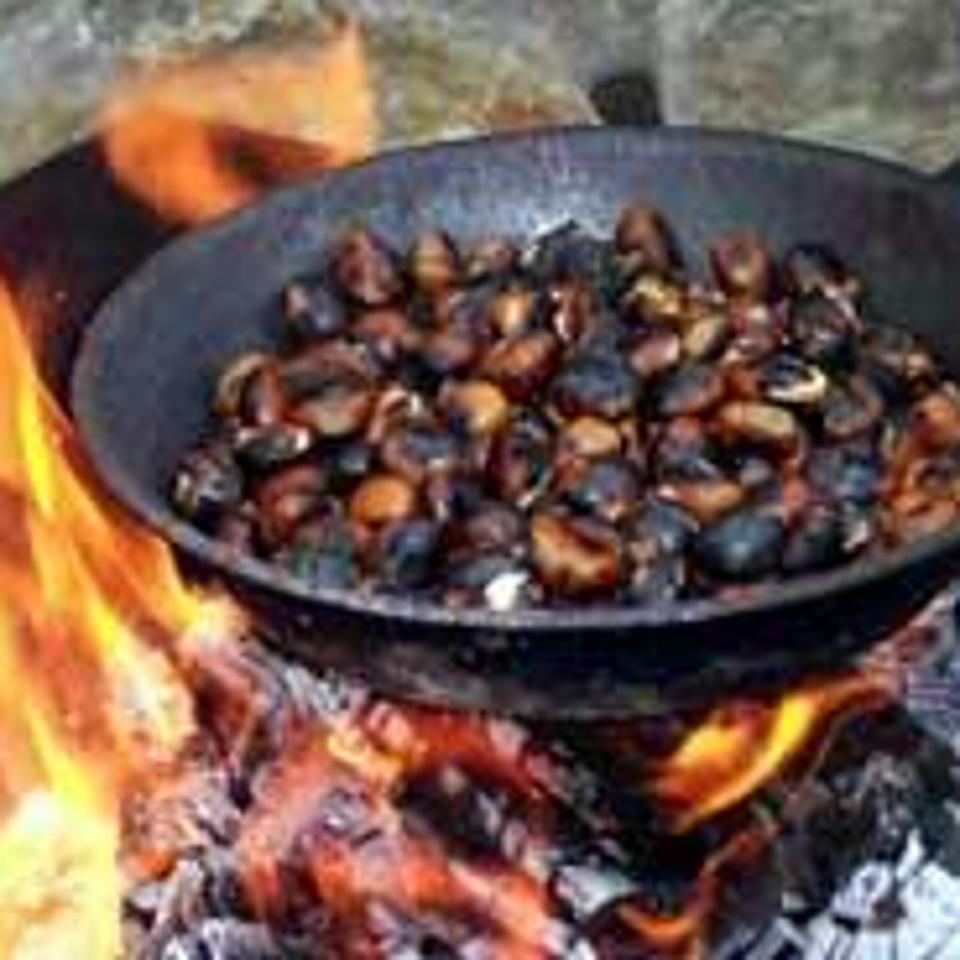
To prepare perfect roasted chestnuts, it is essential to score the outer skin of the chestnuts.
This step prevents the gases developed during cooking from making them “explode” and facilitates the separation between the skin and the pulp.
👉 Useful tip: score the chestnuts longitudinally, along the curve of the fruit.
After scoring them, place them on the perforated chestnut pan and cook them over the fire, stirring them occasionally to achieve uniform cooking on both sides.
An old grandma's secret: once cooked, wrap the roasted chestnuts in a wool cloth and let them rest for a few minutes.
This simple gesture helps to easily remove the skin and keeps the chestnuts warm longer.
You can then extract them one by one from a small opening in the cloth, enjoying them still steaming!
In the peasant houses of the Apennines, roasted chestnuts were prepared in an iron container with a long handle, placed directly over an open flame.
The skin of the chestnuts would burn slightly, hence the local name “bruciati” or “brusé”.
The real skill consisted in rotating the chestnuts regularly, just like pasta in a pan, thanks to the long handle that allowed them to be kept constantly moving.
To obtain roasted chestnuts that are crispy on the outside and soft on the inside, choose small-sized chestnuts: they cook more quickly and evenly.
Italian chestnuts — such as those from Castel del Rio IGP, Mugello, Cuneo, or the Sibillini Mountains — are ideal for this type of preparation thanks to their sweetness and consistency.
You can enjoy roasted chestnuts all year round!
Just freeze the chestnuts after scoring their skin and store them in the freezer.
Whenever you want, you can cook them directly from frozen to have fragrant roasted chestnuts even out of season.